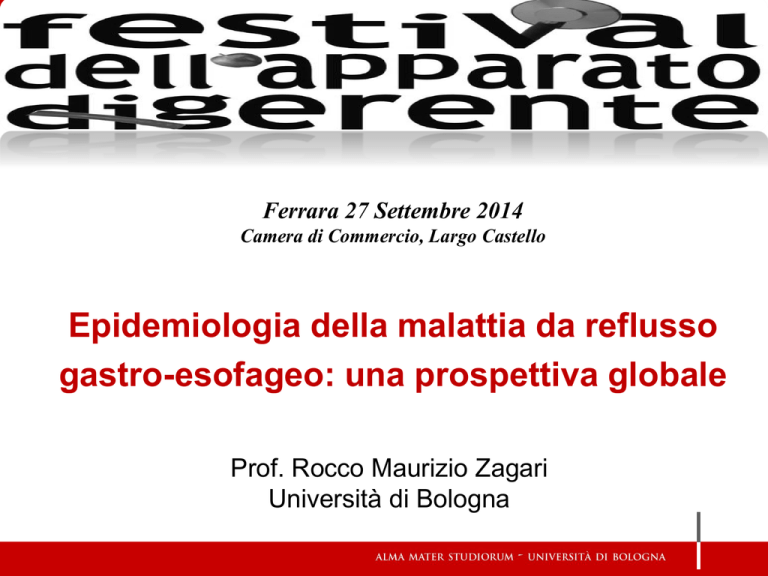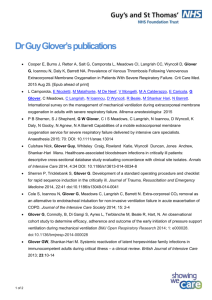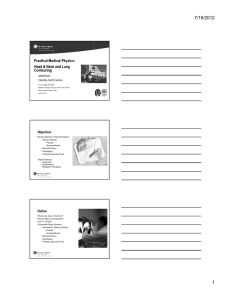
Ferrara 27 Settembre 2014
Camera di Commercio, Largo Castello
Epidemiologia della malattia da reflusso
gastro-esofageo: una prospettiva globale
Prof. Rocco Maurizio Zagari
Università di Bologna
Gastro-esophageal reflux disease (GERD)
GERD is a DISEASE which
develops when the reflux of
gastric content causes
troublesome symptoms or
complications
GERD is a condition which develops when the reflux of gastric
content causes troublesome symptoms or complications
The Montreal Definition and Classification of Gastroesophageal Reflux Disease, AJG 2006
Gastroesofageal Reflux Disease
A major public health concern
• A global chronic disease
• Costly, with a significant negative impact on
quality of life
• Associated with esophageal adenocarcinoma
• Epidemiology of GERD: not an easy task
• Few well designed epidemiological studies in
the general population
GERD is a condition which develops when the reflux of gastric
content causes troublesome symptoms or complications
In population-based studies, GERD is
defined by heartburn and/or regurgitation –
occurring at least 2 days per week, if mild, or
at least 1 day per week, if moderate / severe
The Montreal Definition and Classification of Gastroesophageal Reflux Disease, AJG 2006
Population-based studies
of the incidence of GERD-symptoms
El-Serag et al. GUT 2014
Worldwide prevalence of GERD-symptoms
El-Serag et al. GUT 2014
Worldwide time-trend prevalence
of GERD-symptoms
30%
Prevalence
25%
20%
N.AMERICA
S.AMERICA
EUROPE
ASIA
AUSTRALIA
15%
10%
5%
0%
1990
1995
2000
2005
Date of publication
2010
Bazzoli F, DDW 2012
2015
Poisson regression analysis of trends in the
prevalence of GERD worldwide
El-Serag et al. GUT 2014
Changes in prevalence of GERD-symptoms
from 1995-7 to 2006-9 by sex in Norway
Men
Women
0%
5%
10%
1995-97
15%
20%
2006-09
The prevalence of at least weekly GERD-symptoms increased by 47%
(from 11.6% to 17.1%)
Ness-Jensen et al. GUT 2011
Esophageal cancer
Age-adjusted incidence rates in the U.S.
Everhart JE & Constance ER. Gastroenterology 2009
Limitations of reflux symptom-based
epidemiological studies
• Estimates based on symptom surveys alone may under-diagnose
true GERD prevalence.
• Only endoscopy can identify asymptomatic subjects with reflux
esophagitis or Barrett’s esophagus.
• Reflux symptom-based and endoscopic diagnoses of GERD
provide complementary information for epidemiological research.
• Very few large-scale endoscopic studies in the general population
have been carried out so far.
Endoscopic studies in the general population
High prevalence of gastroesophageal reflux symptoms and esophagitis
with or without symptoms in the general adult Swedish population:
the Swedish Kalixanda study.
Ronkajnen et al, Scand J Gastroenterol 2005
Gastro-oesophageal reflux symptoms, oesophagitis and Barrett’s
oesophagus in the general population:
the Italian Loiano–Monghidoro study
Zagari et al, GUT 2008
Epidemiology of symptom-defined gastroesophageal reflux disease and
reflux esophagitis:
the Chinese SILC study.
Zou et al, Scand J Gastroenterol 2011
Large-scale endoscopic surveys
in the general population
Prevalence of symptom-defined GERD
40%
30%
28,1%
25,9%
20%
10%
4,7%
0%
Kalixanda
Loiano
M onghidoro
SILC
Prevalence of different types of endoscopic
findings in the general population
%
SILC
Prevalence of esophagitis by severity
in the general population
3,1% 0,0%
Loiano Monghidoro
0,8%
33,3%
Kalixanda
A
3,3%
SILC
13,1%
B
C
1,3%
63,6% 3,1%
2,0%
0,0%
D
25,4%
33,3%
82,8%
63,6%
71,3%
Dent J et al. Clin Gastroenterol Hepatol 2012
Prevalence of esophagitis in individuals with or without
symptoms of GERD in the general population
35%
30%
GERDs
29,0%
No GERDs
25%
19,9%
20%
15%
12,5%
12,1%
8,5%
10%
6,1%
5%
0%
Kalixanda
Loiano Monghidoro
SILC
Proportion of individuals with esophagitis who do not
have symptoms of GERD in the general population
No GERDs
GERDs
100%
80%
60%
90,9%
40%
66,6%
20%
52,5%
0%
Kalixanda
Loiano Monghidoro
SILC
Diagnostic Features of Barrett’s Esophagus
Spechler SJ. NEJM 2014
Prevalence of Barrett’s esophagus
in the general population
12%
10,3%
10%
8%
6%
3,6%
4%
2%
1,6%
1,3%
1,8%
0%
Kalixanda
Loiano Monghidoro
ESEM: endoscopically suspected esophageal metaplasia
SIM: Specialized intestinal metaplasia
SILC
Prevalence of Barrett’s esophagus in individuals with or
without symptoms of GERD in the general population
ESEM GERDs
ESEM No GERDs
SIM GERDs
SIM No GERDs
16%
12%
8%
4%
0%
Kalixanda
Loiano Monghidoro
SILC
Proportion of individuals with Barrett’s oesophagus who
do not have symptoms of GERD in the general population
No GERDs
GERDs
100%
80%
60%
94,7%
40%
72,8%
68,8%
59,4%
46,2%
20%
0%
ESEM SIM
Kalixanda
ESEM SIM
Loiano Monghidoro
ESEM SIM
SILC
Large-scale endoscopic surveys
in the general population
True prevalence of GERD
Kalixanda
Loiano
Monghidoro
SILC
1000
1033
1029
28.1%
25.9%
4.7%
• Esophagitis
12.1%
8.6%
6.1%
• Barrett - SIM
1.9%
0.8%
N/A
42.1%
35.3%
--
Subjects n.
GERD symptoms
NO GERD symptoms
True prevalence
Screening for Barrett’s Esophagus
Screening all patients with GERD for Barrett’s esophagus is
NOT recommended
(week recommendation, moderate-quality evidence)
In patients with GERD and multiple risk factors for Barrett’s
esophagus and esophageal adenocarcinoma screening for
Barrett’s esophagus is suggested:
Risk factors:
Age > 50 years, male sex, white race, obesity and smoking
(strong recommendation, low-quality evidence)
AGA Guidelines, Gastroenterology 2011
The incidence of esophageal cancer and
high-grade dysplasia in Barrett’s esophagus
A Systematic Review and Meta-analysis
Pooled estimate
Per 100 person-years
Person-years
Cancer
0.39
1 in 256
Cancer and
high-grade dysplasia
0.77
1 in 130
Yousef et al Am J Epidemiol 2008
Surveillance of Barrett’s esophagus
Endoscopic surveillance should be performed in patients with
Barrett’s esophagus with the following surveillance intervals:
• Barrett’s esophagus: 3 – 5 years
• Low-grade dysplasia: 6 –12 months
• High-grade dysplasia in absence of eradication therapy: 3 months
(weak recommendation, low-quality evidence)
AGA – Guidelines 2011
Spechler SJ. NEJM 2014
Risk and protective factors for GERD
Risk factors
Protective factors
• Hiatus Hernia
• Helicobacter pylori
• Overweight / Obesity
• Age
• Gender
• Genetic
• Cigarette smoking
• Alcohol consumption
• Drugs intake
• Physical activity
Hiatus hernia and GERD in
endoscopic-based population studies
Hiatus Hernia is significantly associated
with an increased risk of:
• Frequent reflux symptoms
• Esophagitis
• Barrett’s esophagus
Ronkainen et al. Scand J Gastroenterol 2005
Ronkainen et al. Gastroenterology 2005
Zagari et al. GUT 2008
Prevalence of Hiatus hernia
in the general population
50%
43,0%
40%
30%
23,9%
20%
10%
0,7%
0%
Kalixanda
Loiano
Monghidoro
SILC
BMI and the risk of GERD symptoms
Jacobson BC et al, NEJM 2006
Obesity and GERD: a positive association
GERD symptoms
Hampel et al. Ann Intern Med 2005
Barrett Esophagus
Kamat et al. Ann Thorac Surg 2009
Esophagitis
El-Serag H. Dig Dis Sci 2008
Esophageal Adenocarcinoma
El-Serag H. Dig Dis Sci 2008
Past and projected prevalence of overweight
(BMI ≥25 kg/m2)
Wang et al, Lancet 2011
H.pylori and GERD:
a negative association
GERD symptoms
Barrett’s esophagus
Fischbach et al. Helicobacter 2012
Esophageal adenocarcinoma
Zhou et al. Clin Oncol 2008
Raghunath et al. BMJ 2003
Helicobacter pylori and GERD
Ghoshal et al. JNM 2010
Prevalence of gastric and oesophageal lesions before
and after mass eradication of H. pylori in Shangai
Before
chemoprevention
After
chemoprevention
1762
841
1056 (59.9%)
115 (13.7%)
Peptic ulcer
193 (11.0%)
30 (3.6%)
Reflux oesophagitis
241 (13.7%)
230 (27.3%)
Subjects n.
Atrophic gastritis
Lee et al. GUT 2013
Worldwide prevalence of H.pylori infection
Bauer et al. Ulcers 2011
Negative linear association between prevalence of
esophagitis and prevalence of H. pylori in the general
population
Pearson’s correlation coefficient, r = - 0.99
Zagari RM, Unpublished 2014
Time trend of H. pylori infection prevalence
70%
60%
Eastern Europe
50%
40%
India
30%
China
USA
20%
Western Europe
Malaysia
10%
0%
1988-1991
1992-1995
1996-1999
2000-2003
Goh et al. APT 2008
Grad et al. Am J Epidemiol 2011
Miendje Deyi et al. Epidemiol Infect 2011
Conclusions
• In USA and Europe GERD seems to be an “endemic disease”
with a prevalence of about 30-40% in the general population.
• The prevalence of GERD is still increasing in western countries
and it is now clearly rising also in Asia
• A substantial proportion of subjects with esophagitis or Barrett’s
esophagus are free of GERD symptoms.
• The changing epidemiology of GERD correlates with changing
epidemiology of the most important associated factors, such as
obesity and Helicobacter pylori.
Prevalence of esophagitis
in the general population
20%
15,5%
15%
11,8%
10%
6,4%
5%
0%
Kalixanda
Loiano
M onghidoro
SILC


